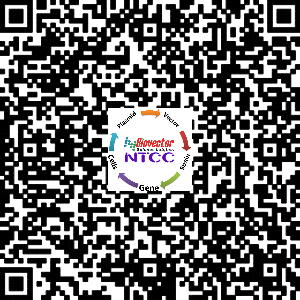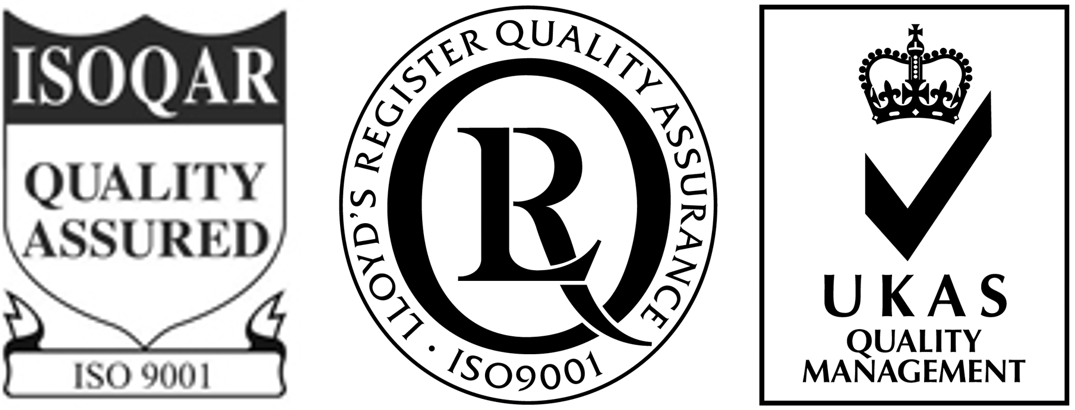BA/F3_BCR-ABL T315I激酶Kinase稳定表达细胞株-BioVector NTCC保藏中心
- 价 格:¥0
- 货 号:BA/F3_BCR-ABL T315I
- 产 地:北京
- BioVector NTCC典型培养物保藏中心
- 联系人:Dr.Xu, Biovector NTCC Inc.
电话:400-800-2947 工作QQ:1843439339 (微信同号)
邮件:Biovector@163.com
手机:18901268599
地址:北京
- 已注册
BA/F3_BCR-ABL T315I激酶Kinase稳定表达细胞株-BioVector NTCC保藏中心
I. Introduction
Cell Line Name:
Ba/F3_BCR-ABL1 T315I
Host Cell:
Ba/F3
Stability: 16 passages
Application:
Anti-proliferation assay and PD assay
Freeze Medium:
90% FBS+10% DMSO
Complete Culture Medium:
RPMI-1640+10% FBS+1 ug/ml puromycin
Mycoplasma Status:
Negative
II.Background
Presence of a BCR-ABL1 fusion gene is necessary for the pathogenesis of CML. In up to 95% of cases, a t(9;22) (q34;q11) translocation results in the BCR-ABL1 fusion gene (Faderl et al. 1999). This translocation results in the Philadephia chromosome. In rare CML cases lacking the traditional t(9;22) translocation, other translocations result in the creation of the BCR-ABL1 fusion gene, which sometimes involve multiple chromosomes.
ABL1 is a tyrosine kinase, and, in normal cells, it plays a role in cellular differentiation and regulation of the cell cycle. The BCR-ABL1 fusion gene creates a constitutively active tyrosine kinase, which leads to uncontrolled proliferation.
Imatinib is the first-generation ABL tyrosine kinase inhibitor, and it was approved by the FDA in 2001; label indications for CML include use in newly diagnosed adult and pediatric patients and in patients after failure of interferon-alpha therapy. While treatment responses to imatinib are often dramatic and lasting, 30–40% of patients will eventually need further treatment (Santos et al. 2011). In many but not all cases, this is due to the acquisition of point mutations in the tyrosine kinase domain of the BCR-ABL1 fusion gene, which renders the protein insensitive to the inhibitory effect of imatinib. This type of disease progression led to the development of second-line TKIs: dasatinib, nilotinib, and bosutinib. Dasatinib and bosutinib have the additional advantage of being inhibitors of SRC.
The second-generation TKIs, dasatinib, nilotinib, and bosutinib, are more potent than imatinib, and they were developed to treat cases of CML resistant to imatinib. Dasatinib and nilotinib are approved for use in CML in newly diagnosed adults, while dasatinib, nilotinib, and bosutinib are approved for use in adults with resistance or intolerance to prior therapy that included imatinib (FDA 2012). Soverini et al. (2011) made mutation-specific treatment decision recommendations that were adopted by NCCN (2012). Recommendations based on preclinical data are as follows: for T315I, HSCT or clinical trial; for V299L, T315A, and F317L/V/I/C, consider nilotinib rather than dasatinib; for Y253H, E255K/V, and F359V/C/I, consider dasatinib rather than nilotinib; and for all other mutations, consider high-dose imatinib, dasatinib, or nilotinib.
Ponatinib is a third-line TKI, developed specifically to address imatinib resistance due to the BCR-ABL1 T315I resistance mutation. Ponatinib is currently being investigated in phase III clinical trials.
III. Representative Data
1. WB of BCR-ABL expression
2. Anti-proliferation assay
Figure 2. Anti-proliferation assay of two reference compounds on the Ba/F3_BCR-ABL T315I Stable Cell Line
IV. Thawing
Thawing: Protocol
1. Remove the vial from liquid nitrogen tank and thaw cells quickly in a 37°C water-bath.
2. Just before the cells are completely thawed, decontaminate the outside of the vial with 70% ethanol and transfer the cells to a 15 ml centrifuge tube containing 9 ml of complete growth medium.
3. Pellet cells by centrifugation at 200 x g force for 5 min, and discard the medium.
4. Resuspend the cells in complete growth medium.
5. Add 10 ml of the cell suspension in a 10 cm dish.
6. Add promycin to a concentration of 1 μg/ml the following day.
Kinase细胞株
现代新药研发的关键首先是寻找,确定和制备药物作用靶点。在500多个已发现的药物靶点里中,GPCR,Ion Channel,Kinase使用的最为广泛。
激酶(kinase)是一类从高能供体分子(如ATP)转移磷酸基团到特定靶分子(底物)的酶;这一过程谓之磷酸化。许多肿瘤的发生是由某些与生长相关的“激酶”发生突变导致异常活化引起的,因而针对这些突变激酶的抑制剂能够有效抑制这些激酶的活性,从而达到抑制癌细胞增长的目的。
BioVector NTCC质粒载体菌种细胞蛋白抗体基因保藏中心
电话:+86-010-53513060
网址:www.biovector.net
I. Introduction
Cell Line Name:
Ba/F3_BCR-ABL1 T315I
Host Cell:
Ba/F3
Stability: 16 passages
Application:
Anti-proliferation assay and PD assay
Freeze Medium:
90% FBS+10% DMSO
Complete Culture Medium:
RPMI-1640+10% FBS+1 ug/ml puromycin
Mycoplasma Status:
Negative
II.Background
Presence of a BCR-ABL1 fusion gene is necessary for the pathogenesis of CML. In up to 95% of cases, a t(9;22) (q34;q11) translocation results in the BCR-ABL1 fusion gene (Faderl et al. 1999). This translocation results in the Philadephia chromosome. In rare CML cases lacking the traditional t(9;22) translocation, other translocations result in the creation of the BCR-ABL1 fusion gene, which sometimes involve multiple chromosomes.
ABL1 is a tyrosine kinase, and, in normal cells, it plays a role in cellular differentiation and regulation of the cell cycle. The BCR-ABL1 fusion gene creates a constitutively active tyrosine kinase, which leads to uncontrolled proliferation.
Imatinib is the first-generation ABL tyrosine kinase inhibitor, and it was approved by the FDA in 2001; label indications for CML include use in newly diagnosed adult and pediatric patients and in patients after failure of interferon-alpha therapy. While treatment responses to imatinib are often dramatic and lasting, 30–40% of patients will eventually need further treatment (Santos et al. 2011). In many but not all cases, this is due to the acquisition of point mutations in the tyrosine kinase domain of the BCR-ABL1 fusion gene, which renders the protein insensitive to the inhibitory effect of imatinib. This type of disease progression led to the development of second-line TKIs: dasatinib, nilotinib, and bosutinib. Dasatinib and bosutinib have the additional advantage of being inhibitors of SRC.
The second-generation TKIs, dasatinib, nilotinib, and bosutinib, are more potent than imatinib, and they were developed to treat cases of CML resistant to imatinib. Dasatinib and nilotinib are approved for use in CML in newly diagnosed adults, while dasatinib, nilotinib, and bosutinib are approved for use in adults with resistance or intolerance to prior therapy that included imatinib (FDA 2012). Soverini et al. (2011) made mutation-specific treatment decision recommendations that were adopted by NCCN (2012). Recommendations based on preclinical data are as follows: for T315I, HSCT or clinical trial; for V299L, T315A, and F317L/V/I/C, consider nilotinib rather than dasatinib; for Y253H, E255K/V, and F359V/C/I, consider dasatinib rather than nilotinib; and for all other mutations, consider high-dose imatinib, dasatinib, or nilotinib.
Ponatinib is a third-line TKI, developed specifically to address imatinib resistance due to the BCR-ABL1 T315I resistance mutation. Ponatinib is currently being investigated in phase III clinical trials.
III. Representative Data
1. WB of BCR-ABL expression
2. Anti-proliferation assay
Figure 2. Anti-proliferation assay of two reference compounds on the Ba/F3_BCR-ABL T315I Stable Cell Line
IV. Thawing
Thawing: Protocol
1. Remove the vial from liquid nitrogen tank and thaw cells quickly in a 37°C water-bath.
2. Just before the cells are completely thawed, decontaminate the outside of the vial with 70% ethanol and transfer the cells to a 15 ml centrifuge tube containing 9 ml of complete growth medium.
3. Pellet cells by centrifugation at 200 x g force for 5 min, and discard the medium.
4. Resuspend the cells in complete growth medium.
5. Add 10 ml of the cell suspension in a 10 cm dish.
6. Add promycin to a concentration of 1 μg/ml the following day.
Kinase细胞株
现代新药研发的关键首先是寻找,确定和制备药物作用靶点。在500多个已发现的药物靶点里中,GPCR,Ion Channel,Kinase使用的最为广泛。
激酶(kinase)是一类从高能供体分子(如ATP)转移磷酸基团到特定靶分子(底物)的酶;这一过程谓之磷酸化。许多肿瘤的发生是由某些与生长相关的“激酶”发生突变导致异常活化引起的,因而针对这些突变激酶的抑制剂能够有效抑制这些激酶的活性,从而达到抑制癌细胞增长的目的。
BioVector NTCC质粒载体菌种细胞蛋白抗体基因保藏中心
电话:+86-010-53513060
网址:www.biovector.net
- 公告/新闻




